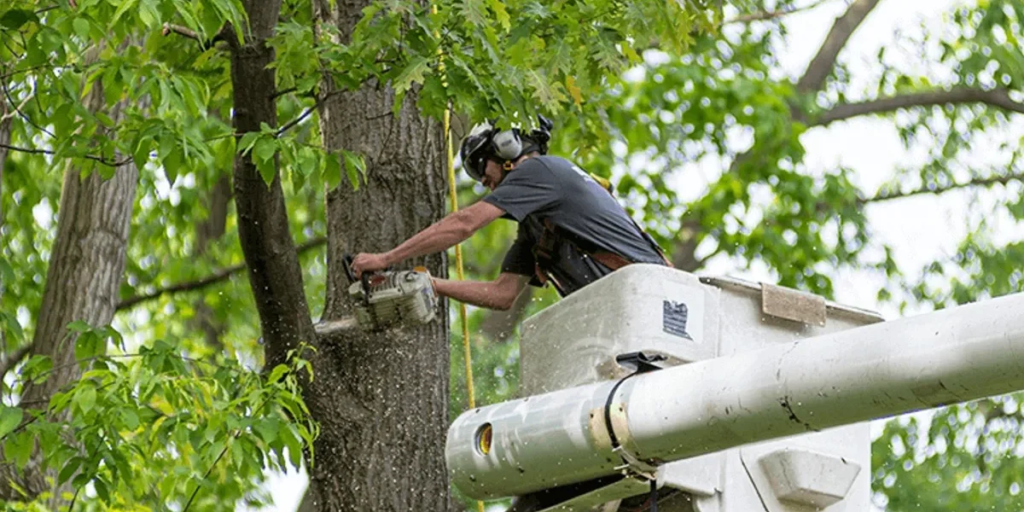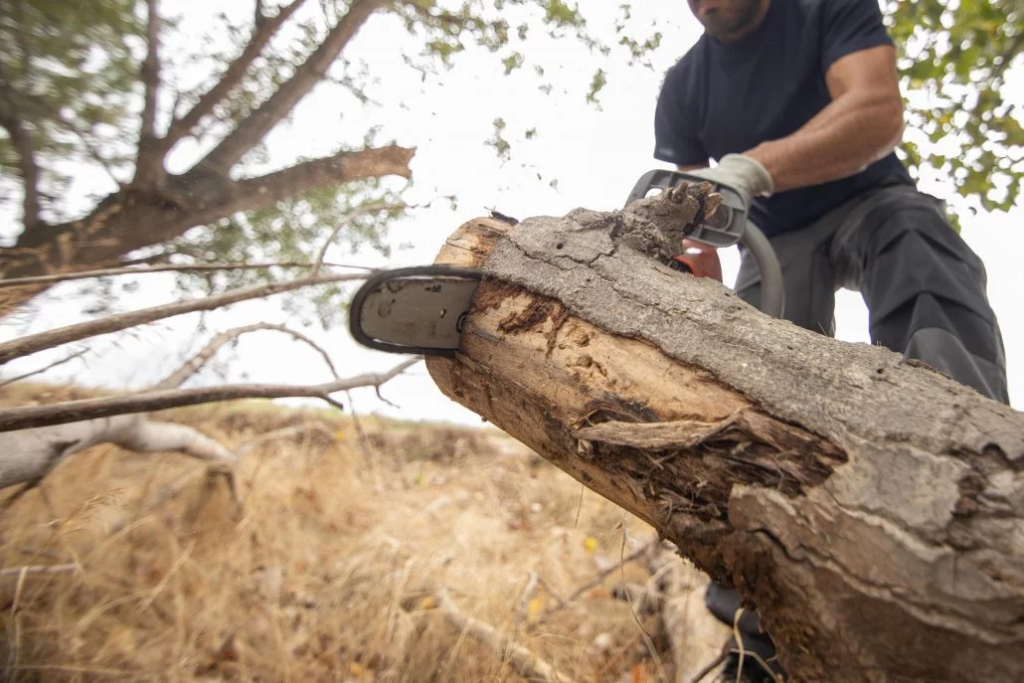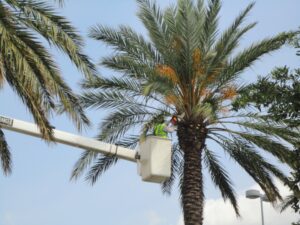Tree Removal Laws in the United Kingdom: A Comprehensive Guide
Are you an American property owner with interests in the UK, or perhaps planning to relocate to Britain? Understanding tree removal laws in the United Kingdom might seem daunting at first, but this comprehensive guide will walk you through everything you need to know. The UK has some of the most robust tree protection regulations in the world, and navigating these rules is essential whether you’re managing existing property or considering new investments across the pond.
Understanding Tree Protection Orders (TPOs)
Tree Preservation Orders (TPOs) form the backbone of the UK’s approach to protecting trees. Introduced in 1947 as part of the Town and Country Planning Act, these orders give local planning authorities the power to protect specific trees, groups of trees, or entire woodlands that provide significant amenity value to the local area.
When a tree is covered by a TPO, you cannot cut it down, top it, lop it, uproot it, willfully damage it, or willfully destroy it without first obtaining permission from your local planning authority. The penalties for violating these orders can be substantial—up to £20,000 ($26,000) per tree in magistrates’ courts, with unlimited fines possible in more serious cases handled by higher courts.
You might be wondering how to determine if a tree on your property is protected by a TPO. The simplest approach is to contact your local planning authority directly. Most UK councils maintain registers of TPOs that are available for public inspection, and many now offer online search tools where you can check using your property address. The UK government provides guidance on this process through their Planning Portal website.
How to Apply for Permission to Work on TPO-Protected Trees
If you discover that trees on your property are protected, you’ll need to submit an application to your local authority before undertaking any work. The process typically follows these steps:
- Complete the standard application form available from your local planning authority
- Provide detailed information about the tree(s) and the work you propose
- Include a clear statement of reasons for the work
- Submit a report from a qualified arborist if relevant (highly recommended)
- Wait for the decision, which can take up to eight weeks
The local authority will evaluate your application based on the tree’s amenity value, condition, and the validity of your reasons for requesting work. They may approve your application, approve it with conditions, or deny it. If denied, you have the right to appeal to the Planning Inspectorate.
Conservation Areas and Their Impact on Tree Removal
Beyond TPOs, the UK has designated Conservation Areas that carry additional protections for trees. These areas are established to preserve places of special architectural or historic interest, and all trees with a trunk diameter exceeding 75mm (measured at 1.5m from the ground) are automatically protected.
If you own property within a Conservation Area, you must provide written notice to your local planning authority at least six weeks before carrying out work on any qualifying tree, even if it’s not specifically covered by a TPO. This notice, commonly called a “Section 211 Notice,” gives the authority time to assess the tree and decide whether to place a TPO on it.
Failure to provide this notice can result in the same penalties as TPO violations. The key difference is that with Conservation Area protections, you don’t need explicit permission—you simply need to notify the authority and wait for the six-week period to expire without them taking action.
To determine if your property lies within a Conservation Area, check with your local planning authority or consult the Historic England website which maintains records of designated areas.

Trees and Planning Permission for Development
If you’re considering property development in the UK, trees become an especially important consideration. Trees are a material consideration in the UK planning system, meaning their presence and preservation can significantly impact whether permission for development is granted.
When submitting a planning application for development that might affect trees, you’ll typically need to include:
- A tree survey identifying all trees on and adjacent to the site
- An arboricultural impact assessment
- A tree protection plan showing how trees will be safeguarded during construction
- An arboricultural method statement detailing specific measures to protect trees
Local planning authorities often impose conditions requiring tree preservation or replacement planting when granting permission. In some cases, they may require you to plant new trees to compensate for authorized removals.
The UK’s National Planning Policy Framework explicitly states that development resulting in the loss of aged or veteran trees should be refused unless there are wholly exceptional reasons and a suitable compensation strategy exists.
Trees and Boundary Disputes
Tree-related disputes between neighbors are common in the UK, and the legal principles governing them differ somewhat from those in the US. Here’s what you should know:
When a tree’s trunk stands wholly on your land, you generally own the tree and have responsibility for it. However, you may still be liable for damage caused by the tree to neighboring properties, particularly if you were aware of a dangerous condition.
Branches or roots that cross a boundary remain your property, but your neighbor has the right to cut them back to the boundary line (though not beyond). They should offer the cut material back to you, as technically it remains your property, though this is often handled informally.
The UK operates under the principle of “common law nuisance” for tree disputes. If your tree causes actual damage to a neighboring property—not merely inconvenience or shade—you may be liable. Courts generally balance the interests of tree preservation against the potential for harm.
Felling Licenses and Woodland Management
For larger-scale tree removal, particularly in wooded areas, you may need a felling license from the Forestry Commission regardless of whether TPOs or Conservation Area designations apply. This is required when you plan to cut down more than 5 cubic meters of timber (roughly 5-8 mature trees) in any calendar quarter.
Exemptions exist for:
- Trees in gardens, churchyards, and public open spaces
- Trees with a diameter less than 8cm (measured at 1.3m from the ground)
- Some specific pruning and maintenance activities
- Trees that present an immediate danger
The Forestry Commission provides detailed guidance on felling licenses and exemptions, and applications can now be submitted online. Unauthorized felling can result in prosecution and unlimited fines, with potential requirements to replant trees that were illegally removed.

Comparison of UK and US Approaches to Tree Regulation
To help you understand the UK system in a familiar context, here’s a comparison of tree removal regulations between the UK and typical US approaches:
| Aspect | United Kingdom | United States |
|---|---|---|
| Primary regulatory framework | Centralized national legislation with local implementation | Primarily local ordinances that vary widely by municipality |
| Protected status determination | TPOs and Conservation Areas designated by local authorities | Often based on tree size, species, or location with heritage tree designations |
| Permit requirements | Permission required for protected trees, notification for Conservation Areas | Permits generally required only for specific sizes/species or in certain zones |
| Penalties for violations | Up to £20,000 ($26,000) per tree, with unlimited fines possible in higher courts | Typically lower, ranging from hundreds to thousands of dollars depending on locality |
| Private property rights balance | Stronger emphasis on community benefits and environmental protection | Greater weight typically given to property owner rights |
| Appeal process | Through Planning Inspectorate, an independent national body | Usually through local boards or municipal courts |
Ancient and Veteran Trees: Special Protections
The UK places particular emphasis on protecting ancient and veteran trees, which are considered irreplaceable natural heritage. Ancient trees are those in the final stage of their life, characterized by features like a hollow trunk, while veteran trees show ancient characteristics but may not be as old chronologically.
These trees receive additional protections under planning policy, and the UK government specifically discourages development that would result in their loss. The Ancient Tree Inventory maintained by the Woodland Trust can help you identify if there are any recorded ancient or veteran trees on or near your property.
Ancient and veteran trees often support unique ecosystems and rare species, which may trigger additional protections under wildlife legislation. Before considering work on such trees, you should consult both arboricultural and ecological specialists.
Protected Species Considerations
Trees in the UK often provide habitat for protected species, adding another layer of legal consideration. The Wildlife and Countryside Act 1981 and Conservation of Habitats and Species Regulations 2017 make it illegal to damage or destroy breeding sites or resting places of protected species.
Some key protected species associated with trees include:
- Bats – All UK bat species are legally protected, and they often roost in trees
- Nesting birds – Active nests are protected during breeding season
- Great crested newts – Protected from disturbance, particularly around ponds with nearby woodland
- Dormice – Specially protected mammals that inhabit woodland areas
Before conducting tree work, particularly during the spring and summer months, you should commission appropriate surveys to check for the presence of protected species. Disturbing these species without appropriate licenses can result in criminal prosecution, with maximum penalties including unlimited fines and up to six months imprisonment.

Managing Dangerous Trees and Emergency Situations
Despite the strict protections described above, UK law does recognize that public safety takes precedence. If a tree poses an immediate danger to people or property, you can take necessary action without waiting for permission, even if the tree is protected by a TPO or located in a Conservation Area.
However, the burden of proof is on you to demonstrate that the tree presented an immediate danger. You should:
- Take photographs documenting the dangerous condition before work begins
- Collect statements from arborists or other witnesses
- Keep samples of decayed or damaged wood
- Notify your local authority as soon as possible after emergency work
- Only do the minimum work necessary to make the tree safe
The “five-day notice” procedure allows for expedited permission in less urgent but still pressing cases. Through this process, you notify the local authority of necessary work and can proceed if they don’t object within five working days.
Subsidence and Tree-Related Property Damage
Trees can sometimes cause property damage through subsidence, particularly in areas with clay soils. Subsidence occurs when soil beneath a building shrinks due to extended dry periods, and tree roots can exacerbate this process by extracting moisture from the soil.
If you suspect tree-related subsidence, the process typically involves:
- Gathering evidence including property damage records and soil analysis
- Consulting with structural engineers and arboricultural experts
- Submitting a report to your insurance company
- Filing an application for tree work with the local authority if the tree is protected
UK courts have established precedents through cases like Delaware Mansions Ltd v Westminster City Council, which established that tree owners can be liable for the costs of underpinning and repairs where their trees have caused subsidence damage.
The following table outlines common indicators of tree-related property damage and appropriate actions:
| Indicator | Potential Cause | Recommended Action | Professional to Consult |
|---|---|---|---|
| Diagonal cracks in walls | Soil shrinkage due to tree roots | Monitor crack width, install soil moisture sensors | Structural engineer |
| Sudden appearance of cracks during summer months | Seasonal soil moisture extraction by trees | Check for nearby trees of significant size | Arboricultural consultant |
| Subsidence limited to one area of the building | Influence of a specific tree or group of trees | Investigate soil type and extent of root presence | Geotechnical engineer |
| Pavement or driveway lifting | Surface roots causing direct pressure | Consider root barriers or surface redesign | Landscape architect |
| Blocked drains or damaged pipes | Root ingress into underground systems | CCTV drain survey | Drainage specialist |
Recent Changes and Future Trends in UK Tree Protection
The UK’s approach to tree protection continues to evolve, with several recent developments worth noting:
The Environment Act 2021 has introduced requirements for “biodiversity net gain” in new developments, meaning projects must deliver at least a 10% increase in biodiversity. This often translates to increased tree planting or preservation requirements.
Climate emergency declarations by many UK local authorities have led to strengthened policies protecting existing trees and promoting new planting. Several councils have set ambitious tree canopy cover targets.
Brexit has prompted revisions to environmental regulation, including the government’s commitment to developing a new Environmental Land Management scheme that rewards landowners for environmental stewardship, including woodland management.
The UK government has launched an England Trees Action Plan 2021-2024, committing to trebling tree planting rates by the end of the current Parliament. This reflects increasing recognition of trees’ role in carbon sequestration and climate change mitigation.
For American property owners with UK interests, staying informed about these evolving policies is crucial, as they may affect both constraints and opportunities related to trees on your property.

Practical Steps for Tree Management in the UK
To navigate the UK’s tree regulations effectively, consider these practical steps:
1. Due Diligence When Purchasing Property
Before finalizing a UK property purchase:
- Commission a tree survey to identify any protected trees
- Request information from the seller about existing TPOs or Conservation Area designations
- Check if any planning conditions related to trees apply to the property
- Review the Land Registry title documents for any covenants relating to trees
- Consider future development plans and how existing trees might impact them
2. Developing a Tree Management Plan
For ongoing property management:
- Work with a qualified arboriculturist to create a comprehensive tree management plan
- Schedule regular professional tree inspections (typically every 3-5 years)
- Maintain records of all tree work and correspondence with authorities
- Consider tree health treatments and preventative maintenance to avoid emergency situations
- Understand your insurance requirements relating to trees
3. Finding Qualified Assistance
In the UK, arboricultural work should be carried out by qualified professionals. Look for:
- Arboricultural Association approved contractors
- Professionals with relevant certifications (e.g., those issued by LANTRA or City & Guilds)
- Membership in professional bodies like the Institute of Chartered Foresters
- Appropriate insurance coverage, including public liability insurance
- Experience dealing with protected trees and local authorities
The Arboricultural Association maintains a directory of approved contractors that can be accessed through their official website.
Conclusion: Balancing Preservation and Property Rights
The UK’s approach to tree regulation reflects a strong cultural commitment to environmental preservation and recognition of trees’ community value. While this can sometimes feel restrictive compared to the US system, understanding and working within these regulations can help you maintain both compliance and healthy trees on your property.
Remember that most local authorities are willing to permit reasonable tree work when it’s properly justified and professionally executed. Building good relationships with local planning departments and seeking professional advice early can help streamline the process.
For Americans with property interests in the UK, viewing these regulations as safeguards for your investment’s long-term value rather than mere restrictions can be helpful. Well-maintained, healthy trees generally contribute positively to property values, particularly in the UK market where greenery is highly prized.
By understanding your responsibilities, planning ahead, and working with qualified professionals, you can successfully navigate the UK’s tree protection system while enjoying the many benefits that trees bring to your property and the wider environment.
For the most current and detailed information on tree regulations in your specific UK locality, always consult your local planning authority or the UK government’s Planning Portal which provides up-to-date guidance on all planning matters, including tree protection.

